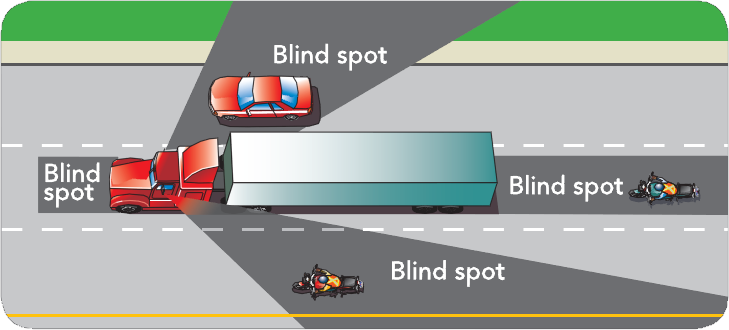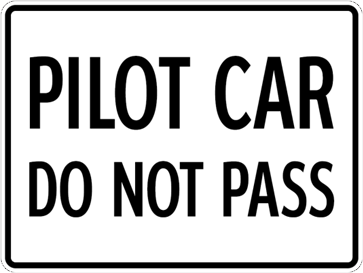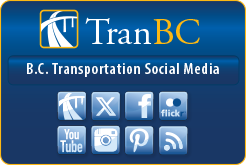Encountering Large Vehicles
Many large vehicles travel on B.C. highways, transporting passengers, goods and resources. Understanding the characteristics of large vehicles, and how they operate, improves traveller safety.
Keep a Safe Distance
Large and heavy vehicles need more time and room to move, turn and stop, especially in bad weather, on hills and in curves. Large vehicles not carrying freight may travel faster than you expect.
Give them extra room and never tailgate. Remember, if you cannot see a vehicle's mirrors the driver cannot see you.

It takes more time to pass a long vehicle. If you need to pass, avoid staying parallel to the vehicle for longer than necessary.
When entering traffic in front of a large vehicle make sure there is plenty of room. A large vehicle needs time to slow down and cannot stop suddenly.
Pilot Cars and Oversize Loads

Pilot cars alert others to oversize loads and keep traffic moving safely. Examples of oversize loads are houses and wind turbine blades.
One or more pilot cars travel in front of, behind, or parallel to the oversize load. Drivers of pilot cars and oversize loads need to see your vehicle to navigate safely. Avoid their blind spots. Never position your vehicle at the rear corners of a pilot car or oversize load.
Be patient if you are unable to pass an oversize load or pilot car. Oversize loads may travel slowly when going uphill. Oversize loads and pilot cars may need to make sudden speed or lane changes and may not have time to signal.
Acknowledge Pilot Cars
Pilot cars may use their headlights, four-way hazard lights, or horn to get your attention. Obey their direction and the traffic signs they display. When you see an oncoming oversize load:
- slow down
- prepare to move to the shoulder if necessary
- turn on your four-way hazard lights to show that you have seen the pilot car

You may have seen signs for runaway lanes. These are life-saving emergency exits for trucks. Always keep these lanes clear in case of emergency.

